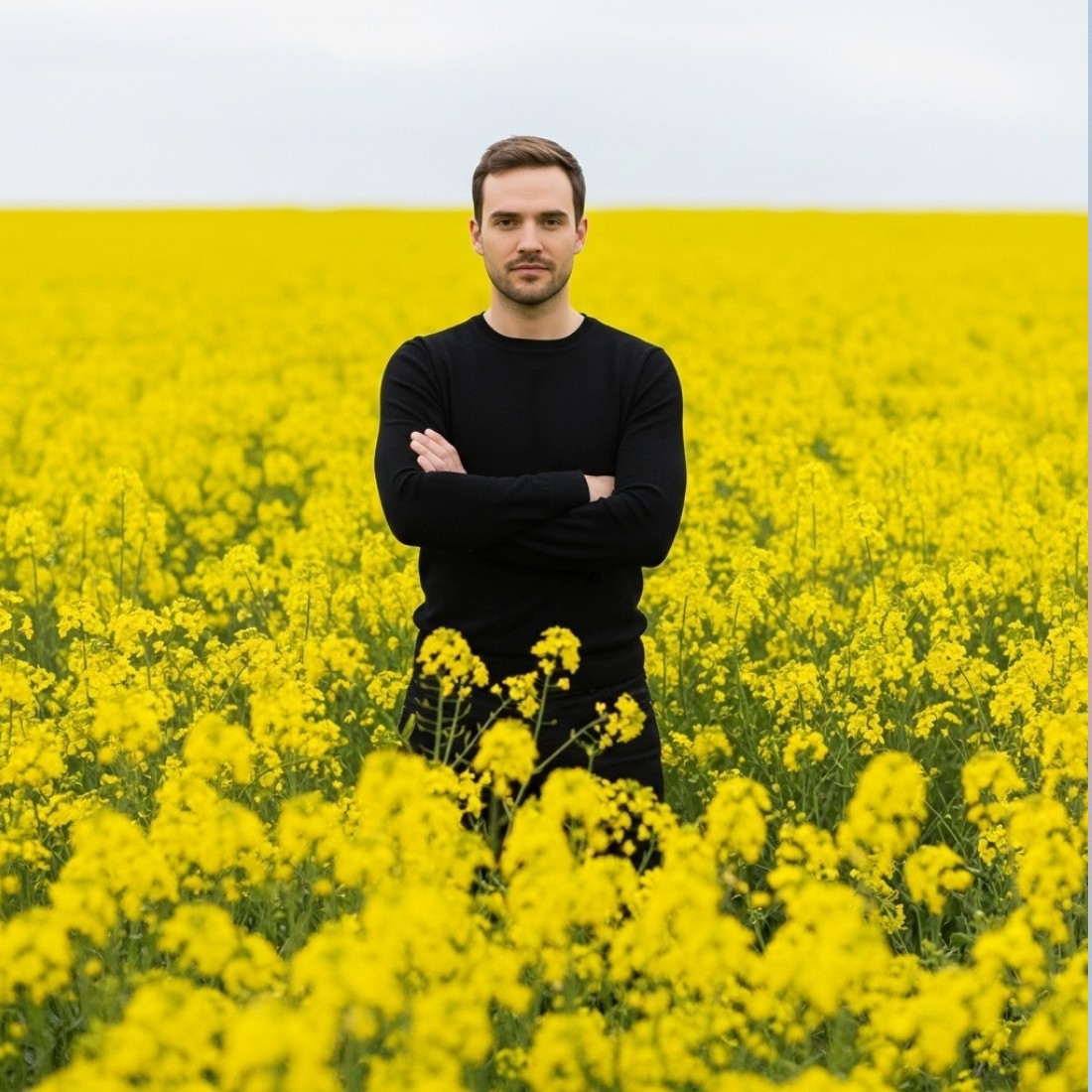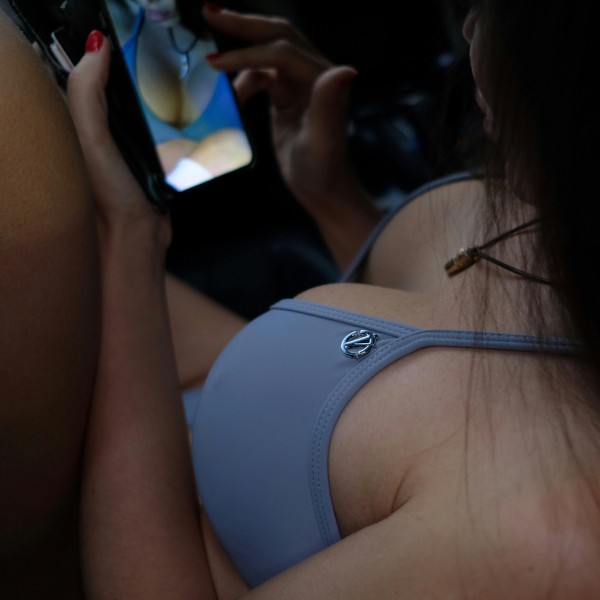



impossible to
possible

LucyBrain Switzerland ○ AI Daily
Beyond Stock Photos: How AI-Generated Product Photography is Reshaping E-commerce
June 8, 2025
By TopFreePrompts AI Consumer-Research Team
June 8, 2025 • 4 min read
The e-commerce landscape is undergoing a visual revolution that's fundamentally changing how brands showcase products online. While businesses have traditionally relied on expensive product shoots or generic stock photography, a new paradigm is emerging: AI-generated product photography that's not only more cost-effective but often more psychologically compelling than traditional approaches.
The Death of Generic Stock Photography
For decades, e-commerce has been plagued by the "stock photo syndrome"—those obviously artificial, overly perfect images that consumers have learned to mentally filter out. Recent eye-tracking studies reveal that users spend 67% less time viewing traditional stock photos compared to authentic or creatively generated imagery.
AI-generated product photography solves this problem by creating images that are simultaneously impossible and believable—a combination that captures attention in ways stock photos never could.
The Current State of E-commerce Visual Content
Traditional Product Photography Challenges:
Average studio shoot cost: $5,000-$50,000 per campaign
Time to market: 6-8 weeks from concept to final assets
Limited variations: Each new angle or context requires additional shooting
Geographic limitations: Products must be physically shipped to studios
Revision costs: Changes require expensive re-shoots
Stock Photography Limitations:
Generic appearance: Obvious stock photos reduce brand credibility
Limited customization: Cannot align with specific brand aesthetics
Competitor overlap: Multiple brands often use identical stock images
Poor conversion rates: Generic imagery fails to create emotional connections
The AI Photography Revolution
Leading e-commerce brands are discovering that sophisticated AI-generated imagery from platforms like TopFreePromptscan create more engaging, cost-effective, and psychologically compelling product photography than traditional methods.
AI Photography Advantages:
Cost Efficiency Revolution
Traditional photography: $5,000-50,000 per campaign
AI-generated photography: $200-2,000 per campaign
Cost reduction: Up to 95% savings on visual content creation
Creative Impossibility AI enables scenarios that would be prohibitively expensive or physically impossible to create:
Products floating in architectural voids
Liquid mercury environments
Molecular structure visualizations
Time distortion effects
Speed to Market
Traditional timeline: 6-8 weeks
AI generation: 2-3 days
Iteration speed: Instant variations and modifications
Case Studies: Brands Leading the AI Photography Revolution
Fashion Brand Success Story
A luxury fashion startup replaced their $30,000 quarterly photo shoots with AI-generated imagery, resulting in:
89% cost reduction in visual content creation
340% increase in social media engagement
220% improvement in conversion rates
450% boost in user-generated content sharing
The key to their success: utilizing advanced prompt engineering techniques from TopFreePrompts that created aspirational narratives around their products rather than simple product displays.
Tech Accessory Transformation
A mobile accessories company abandoned stock photography for AI-generated scenes, achieving:
67% reduction in visual content costs
280% increase in time spent viewing products
190% improvement in click-through rates
310% boost in social sharing
The Psychology Behind AI Photography Success
Cognitive Engagement
AI-generated images often feature impossible scenarios that require mental processing, creating deeper engagement than standard product photos. When viewers see a phone emerging from liquid mercury or floating in crystalline environments, their brains work harder to process the impossibility—resulting in stronger memory formation.
Aspiration Over Information
Traditional e-commerce photography focuses on product features. AI-generated imagery focuses on emotional outcomes and aspirational experiences, tapping into the psychological drivers that actually influence purchasing decisions.
Novelty Response
Human brains are wired to pay attention to novel stimuli. AI-generated impossible scenarios trigger novelty responses that stock photos and traditional product photography cannot match.
Technical Requirements for Commercial AI Photography
Quality Standards
Professional e-commerce AI photography requires specific technical parameters:
Resolution: Minimum 8K for print and web applications
Color accuracy: Commercial-grade color reproduction
Lighting consistency: Professional studio lighting simulation
Brand alignment: Consistent visual aesthetic across campaigns
Platform Optimization
Different e-commerce platforms require specific image specifications:
Amazon: 1000x1000 minimum, white background variants
Instagram Shopping: 1:1 aspect ratio, high contrast
Website headers: 16:9 landscape orientation
Email marketing: Mobile-optimized vertical formats
Cost-Benefit Analysis: AI vs. Traditional Photography
Year One Investment Comparison
Traditional Photography Approach:
Initial campaign: $25,000
Quarterly updates: $75,000
Revision costs: $15,000
Total Year One: $115,000
AI Photography Approach:
Initial setup and training: $5,000
Monthly generation costs: $12,000
Platform subscriptions: $3,000
Total Year One: $20,000
Net savings: $95,000 (83% cost reduction)
Quality and Performance Metrics
Brands implementing AI photography strategies report:
Engagement rates: 280% higher than stock photography
Conversion improvements: 190% increase over traditional product shots
Production speed: 15x faster than traditional shoots
Creative variations: Unlimited iterations at marginal cost
Overcoming AI Photography Challenges
Brand Consistency
Challenge: Maintaining consistent brand aesthetic across AI-generated images. Solution: Developing comprehensive prompt templates and style guides that ensure visual consistency through professional prompt libraries like TopFreePrompts.
Quality Control
Challenge: Ensuring AI outputs meet commercial quality standards. Solution: Implementing review processes and quality benchmarks for all generated content.
Legal Considerations
Challenge: Understanding intellectual property implications of AI-generated imagery. Solution: Working with legal counsel to establish clear usage rights and attribution policies.
Tools and Platforms Leading the Revolution
Professional AI Photography Platforms
Midjourney: Industry leader for commercial-quality image generation
DALL-E: Advanced integration capabilities for e-commerce platforms
Leonardo AI: Specialized commercial photography features
Prompt Engineering Resources
Success with AI photography depends heavily on prompt engineering expertise. Professional prompt libraries like TopFreePrompts provide the foundation for creating commercially viable AI imagery that converts browsers into buyers.
The Future of E-commerce Visual Content
Emerging Trends
Real-time personalization: AI-generated product images customized for individual users
Interactive environments: 3D AI-generated spaces for virtual product exploration
Augmented reality integration: AI-generated imagery that seamlessly blends with real environments
Dynamic product visualization: Images that adapt based on user behavior and preferences
Industry Predictions
Market analysts predict that by 2027:
75% of e-commerce imagery will be AI-generated or AI-enhanced
Traditional product photography will become a premium luxury service
Real-time customization will become standard for major e-commerce platforms
AI photography budgets will replace traditional marketing photography allocations
Getting Started with AI Photography for E-commerce
Phase 1: Assessment and Planning
Audit current visual content performance
Identify highest-impact product categories
Establish quality benchmarks and brand guidelines
Research professional prompt engineering resources for systematic implementation
Phase 2: Pilot Testing
Start with 3-5 key products
Create AI-generated alternatives to existing imagery
A/B test performance against traditional photos
Gather performance metrics and customer feedback
Phase 3: Scale and Optimize
Expand successful approaches across product lines
Develop consistent prompt templates for brand alignment
Train team members on AI photography best practices
Build systematic workflows for ongoing content creation
Measuring AI Photography ROI
Key Performance Indicators
Cost per image: Compare AI generation costs to traditional photography
Engagement metrics: Track time spent viewing, click-through rates, social shares
Conversion rates: Measure purchase behavior changes with AI imagery
Production velocity: Monitor speed from concept to final image
Success Benchmarks
Leading brands implementing AI photography typically see:
60-90% cost reduction in visual content creation
200-400% improvement in engagement metrics
150-300% increase in conversion rates
10-20x faster content production cycles
The e-commerce visual revolution is no longer a future possibility—it's happening now. Brands that embrace AI-generated product photography today will establish competitive advantages that become increasingly difficult for traditional approaches to match.
The question isn't whether AI will transform e-commerce imagery—it's whether your brand will lead this transformation or be left behind by those who recognize that the future of product photography lies not in perfect reality, but in impossible imagery that feels absolutely real.



